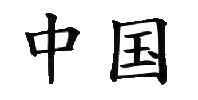China Beat Archive

China Beat Blog: Archive 2008-2012
Date of this Version
7-29-2009
Document Type
Article
Citation
July 29, 2009 in The China Beat http://www.thechinabeat.org/
Abstract
The violence in Xinjiang took place almost a month ago, but it continues to generate interesting commentary (see, for example, this thoughtful essay by Pallavi Aiyar). The early July events have also recently had two reverberations in Australia, as Jia Zhangke and two other Chinese filmmakers pulled out of a Melbourne film festival where a documentary expected to present a sympathetic view of one of the people Beijing blames for the unrest was to be shown, and then hackers attacked the festival’s website to protest that film’s inclusion in the line-up. In light of this, we asked James Millward, a leading specialist in the history of Xinjiang who has written about related issues for us before, to share with the readers of China Beat his take on what happened in early July and how it should be understood.
The ugly mob violence that roiled the western Chinese city of Urumchi in Xinjiang on July 5th was rather quickly suppressed, and Urumchi is now quiet. Thanks to an unprecedented degree of openness to the international press, moreover, we have a better idea specifically what happened than we have for other such incidents in China.
Students who are members of the Uyghur minority—a largely Muslim, Turkic-language speaking group who are natives of the Xinjiang region in far northwestern China—demonstrated on Sunday, July 5 to call for a more thorough investigation into a deadly brawl among Uyghur and Han workers that had occurred at a factory in Guangdong province the previous week. The demonstration turned violent, possibly while it was being repressed by security forces, and thousands of Uyghurs went on a rampage, attacking Hans and destroying property. By Monday, July 6, mobs of Han—the majority ethnic group in China—took to the streets armed with clubs, meat-cleavers and other makeshift weapons, seeking revenge. Police eventually calmed the situation with batons, tear-gas, firearms with live ammunition, curfews and mass arrests. At least 192 people died, and some 1000 were injured. Though we know the broad outlines of what happened, why it happened remains in dispute. The official story from the Xinjiang regional and Chinese authorities is that the riot was instigated by Rebiya Kadeer and the World Uyghur Congress, an umbrella group made up of overseas Uyghur organizations in Europe, America and Central Asia that claims to represent Uyghur interests internationally. (A Uyghur economist and outspoken blogger, Ilham Tohti, has also been blamed by Xinjiang authorities for inciting the riot, and has apparently been detained.) The PRC routinely claims that the WUC and Kadeer—a charismatic spokeswoman for the Uyghur cause who enjoys sympathy in the US Congress and EU parliament—is surreptitiously engaged in separatist and even terrorist activity. Some of the commentary in Western media has harkened back to the issue of alleged Uyghur jihadism, involvement with Al Qaeda, and terrorist plots—issues much discussed with regard to the Uyghurs who wound up in Guantanamo.
Included in
Asian History Commons, Asian Studies Commons, Chinese Studies Commons, International Relations Commons


Comments
Copyright July 29, 2009 James Millward. Used by permission.